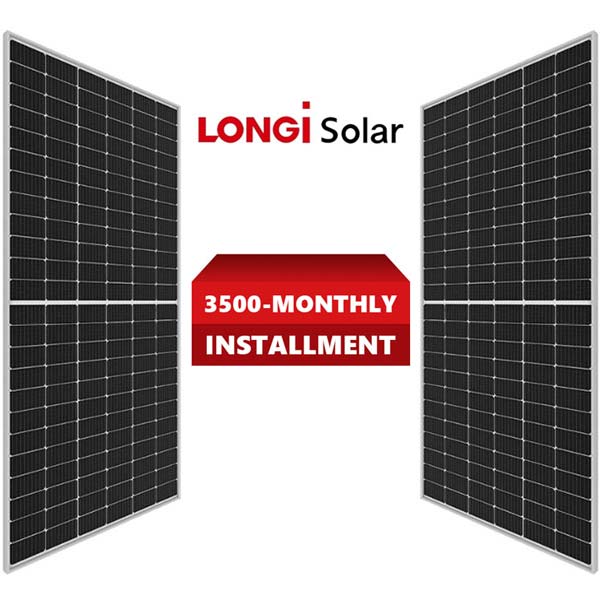What is your source of income?*
Monthly income *
Solar watts refer to the electrical power output of a solar panel or a solar panel system. It indicates the amount of electricity that can be generated by the solar panels under specific conditions.
The Longi watt (W) is the standard unit of power, and it represents the rate at which energy is generated or consumed. In the context of solar panels, the wattage rating is used to indicate the maximum power output of the panels.
For example, a solar panel with a rating of Longi 650 watts (650 W) is capable of producing up to [Watts] watts of electricity under specific test conditions, typically referred to as Standard Test Conditions (STC). STC conditions include a solar irradiance of 1000 watts per square meter, a cell temperature of 25 degrees Celsius, and an air mass of 1.5.
It's important to note that the actual power output of a solar panel can vary depending on various factors such as the intensity of sunlight, temperature, shading, and the panel's efficiency. These factors can affect the panel's performance and result in variations from its rated wattage.
- 1. Site Assessment: Before installation, a site assessment is conducted to evaluate the suitability of the location for solar panel installation. Factors such as shading, roof condition, orientation, and available space are considered to determine the optimal placement and configuration of the solar panels.
- 2. Design and Permitting: Based on the site assessment, a solar system design is created. This includes determining the number and arrangement of solar panels, selecting the appropriate mounting system, and calculating electrical wiring requirements. The design is then submitted for permitting and approval from local authorities, ensuring compliance with building codes and regulations.
- 3. Mounting Structure Installation: The mounting structure or racking system is installed on the roof or ground to securely support the solar panels 650. The type of mounting system will depend on the installation location and configuration. Common mounting methods include roof flush mounts, tilt mounts, and ground mounts.
- 4. Electrical Wiring: Once the mounting structure is in place, the electrical wiring is installed. This involves connecting the solar panels in series or parallel configurations to form strings and routing the wires to the inverter location. Proper wiring techniques and safety measures are followed to ensure efficient and safe electrical connections.
- 5. Inverter Installation: The inverter, which converts the DC electricity generated by the Longi solar panels into AC electricity, is installed. The inverter is typically placed near the main electrical panel or in a location where it can be easily accessed for maintenance. It is connected to the solar panel array and the electrical grid.
It's important to note that solar panels generate DC electricity, which needs to be converted to alternating current (AC) for use in most residential and commercial electrical systems. This conversion is typically done by an inverter, which not only converts the DC to AC but also adjusts the voltage and synchronizes the output with the electrical grid.
When installing a solar panel system, it's crucial to consider the voltage compatibility of the components and ensure that the system is designed and installed by qualified professionals to meet safety standards and electrical regulations. Consulting with a solar professional or installer can help determine the appropriate voltage requirements for your specific solar panel system.

 Longi 340w
Longi 340w